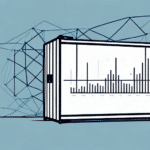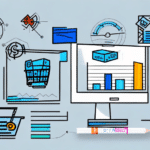Why Measuring Delivery KPIs is Crucial for Your Business
In the competitive delivery industry, measuring your key performance indicators (KPIs) is essential to objectively gauge your business performance and identify areas for improvement. Without tracking these metrics, it's challenging to determine whether your operations are meeting their goals or falling short. Understanding and analyzing delivery KPIs provides a benchmark to compare your performance against industry standards and competitors, enabling you to enhance operational efficiency and drive business growth.
Key Performance Indicators (KPIs) to Track in Delivery
1. Delivery Time
Delivery time measures the duration it takes for a package or product to reach the customer. Reducing delivery time is vital for customer satisfaction and can significantly impact repeat business. According to a Statista report, faster delivery times correlate strongly with higher customer satisfaction rates.
2. Delivery Accuracy
Delivery accuracy assesses the percentage of deliveries made without errors, such as incorrect items or addresses. High delivery accuracy maintains your reputation for reliability and quality service. Ensuring accurate deliveries helps in building trust and loyalty among customers.
3. On-Time Delivery Rate
The on-time delivery rate measures the percentage of deliveries that arrive within the promised timeframe. This KPI is crucial for maintaining customer trust and competitive advantage. Businesses that consistently meet their delivery schedules are more likely to retain customers and attract new ones.
4. Cost per Delivery
Cost per delivery calculates the total cost involved in delivering a single package, including transportation, labor, and resources. Monitoring this KPI helps identify areas where costs can be reduced and efficiency can be improved. Lowering delivery costs without compromising quality can significantly enhance profit margins.
5. Customer Satisfaction Rate
Customer satisfaction rate evaluates how happy customers are with your delivery service. High satisfaction rates lead to increased customer loyalty and positive word-of-mouth referrals. Implementing feedback mechanisms can help in continually improving the delivery experience.
Setting Realistic KPI Targets
Once you have identified the relevant KPIs for your delivery business, the next step is to set realistic and achievable targets. KPI targets should be measurable, attainable, relevant, and time-bound (SMART). Consider the current performance levels and industry benchmarks when setting these targets to ensure they are both challenging and achievable.
For instance, if your current on-time delivery rate is 85%, setting a target to reach 90% within the next six months can drive focused improvements without overstretching resources.
Effective Measurement and Analysis of Delivery KPIs
Tracking KPIs is only the first step; effective measurement and analysis are crucial for deriving actionable insights. Utilize data visualization tools like Tableau or Power BI to create interactive dashboards that provide real-time insights into your delivery performance. Regularly reviewing these dashboards helps in identifying trends, patterns, and areas that require attention.
Incorporating data from various sources, including customer feedback, delivery logs, and financial reports, can provide a comprehensive view of your delivery operations. This holistic approach ensures that decision-making is informed by accurate and up-to-date information.
Strategies to Improve Your Delivery KPIs
1. Optimize Delivery Routes
Using route optimization software can significantly reduce delivery times and costs by finding the most efficient paths for your drivers. Optimized routes help in minimizing fuel consumption and ensuring timely deliveries, thereby improving both delivery time and cost per delivery.
2. Invest in Technology
Implementing advanced technologies such as real-time tracking systems and automated inventory management can enhance delivery accuracy and efficiency. Technologies like GeoPointe enable real-time tracking, providing both the business and customers with accurate delivery statuses.
3. Enhance Employee Training
Regular training programs for delivery personnel can improve their efficiency and accuracy. Well-trained employees are better equipped to handle challenges, reducing the likelihood of delivery errors and improving customer satisfaction rates.
4. Implement Customer Feedback Mechanisms
Encouraging customers to provide feedback on their delivery experience helps in identifying areas for improvement. Utilizing surveys and reviews can provide valuable insights into customer preferences and expectations, guiding strategic decisions.
Overcoming Common Challenges in Measuring Delivery KPIs
While tracking delivery KPIs is essential, businesses often face challenges such as data fragmentation, lack of standardization, and external factors affecting delivery performance. To overcome these challenges:
- Integrate Systems: Use integrated software solutions to consolidate data from multiple sources, ensuring consistency and accuracy.
- Standardize Definitions: Establish clear definitions for each KPI to ensure consistency across the organization.
- Account for External Factors: Incorporate variables such as weather and traffic conditions into your analysis to better understand their impact on delivery performance.
Case Studies: Successful KPI Improvement in Delivery Businesses
Several businesses have successfully enhanced their delivery KPIs through strategic initiatives:
Flexo Bliss
Singapore-based Flexo Bliss optimized their delivery routes, resulting in a nearly 50% reduction in delivery times. By leveraging route optimization software, they enhanced efficiency and customer satisfaction.
DocMorris
The German pharmacy network DocMorris improved their delivery efficiency by up to 30% through effective route planning and process optimization. Their data-driven approach facilitated significant performance enhancements.
Maintaining Consistent Performance with Delivery KPIs
Consistency is key to sustaining high delivery performance. To maintain consistent KPI performance:
- Regular Monitoring: Continuously track and review KPIs to stay informed about your delivery performance.
- Set Clear Goals: Establish well-defined objectives for each KPI to guide your improvement efforts.
- Leverage the Right Tools: Utilize robust analytics and visualization tools to accurately measure and interpret KPI data.
- Continuous Improvement: Regularly refine your processes based on KPI insights to drive ongoing performance enhancements.
Avoiding Common Mistakes in Measuring Delivery KPIs
To ensure effective KPI measurement and improvement, avoid the following common mistakes:
- Overloading with KPIs: Focus on tracking the most relevant KPIs instead of an overwhelming number of metrics.
- Setting Unrealistic Targets: Establish achievable KPI targets based on current performance and industry benchmarks.
- Poor Communication: Regularly communicate KPI progress and insights with all stakeholders to ensure alignment and collaborative improvement efforts.
- Neglecting Regular Reviews: Continuously assess and adjust your KPIs to reflect changing business needs and market conditions.
Conclusion
Measuring and analyzing delivery KPIs is fundamental for optimizing your delivery operations, enhancing customer satisfaction, and driving business growth. By identifying the right KPIs, setting realistic targets, leveraging advanced tools, and implementing strategic improvement initiatives, your delivery business can achieve sustained success. Avoid common pitfalls by maintaining a focused and consistent approach to KPI management, ensuring that your operations remain efficient and competitive in a dynamic market.




















